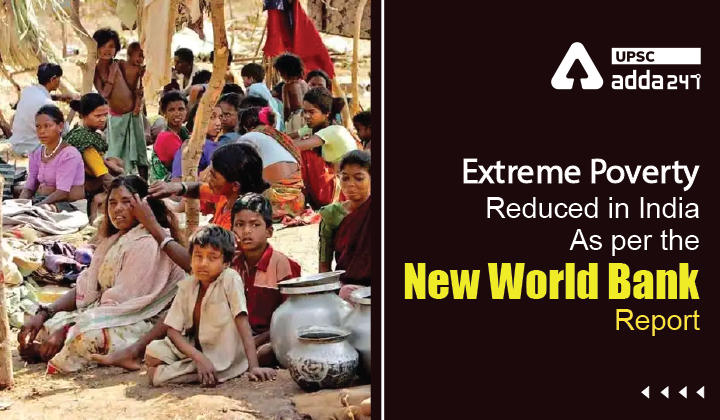Table of Contents
Poverty in India UPSC: Relevance
- GS 2: Issues relating to poverty and hunger.
Extreme poverty in India: Context
- According to a recently released World Bank report titled ‘Poverty in India Has Declined over the Last Decade But Not As Much As Previously Thought’, extreme poverty in India dropped to 10.2% in the pre-Covid year of 2019 from 22.5% in 2011.
Extreme poverty reduced in India: Key points
- The report also said that the pace of reduction of extreme poverty in rural India has been more dramatic than in urban areas.
- The poverty level in rural and urban areas declined by 14.7% and 7.9% respectively, during the 2011-2019 period.
- While the extreme poverty eased to 11.6% in rural areas in 2019, the urban poverty level stood at 6.3%.
- The paper revealed that urban poverty increased by 2% in the demonetisation year of 2016 and rural poverty rose by 10% in 2019.
- An IMF working report recently suggested that extreme poverty in India was as low as 0.8% in 2019 and the country managed to keep it at that level in 2020 despite the pandemic, by resorting to food transfers through the Pradhan Mantri Garib Kalyan Yojana.
Consumption inequality
- Consumption inequality in India has moderated after 2011, with almost no change between 2015 and 2019.
- Small landholders (landholding <2 ha) have experienced higher income growth.
- Real incomes for farmers with the smallest landholdings have grown by 10% between 2013 and 2019.
Consumer Pyramids Household Survey
- The World Bank paper uses the Consumer Pyramids Household Survey (CPHS) model.
- CPHS is an annual survey conducted by the Centre for Monitoring the Indian Economy (CMIE), to provide estimates of how poverty and inequality in India have evolved since 2011.
- CPHS is more recent, has wider coverage, and collects comprehensive data from Indian household living conditions.
- The CPHS is already being used by scholars to measure poverty in India.
What is Extreme poverty?
- The number of people living on less than $1.90 a day (roughly Rs 145), are said to be living in the state of extreme poverty.
Read current affairs for UPSC





 TSPSC Group 1 Question Paper 2024, Downl...
TSPSC Group 1 Question Paper 2024, Downl...
 TSPSC Group 1 Answer key 2024 Out, Downl...
TSPSC Group 1 Answer key 2024 Out, Downl...
 UPSC Prelims 2024 Question Paper, Downlo...
UPSC Prelims 2024 Question Paper, Downlo...




